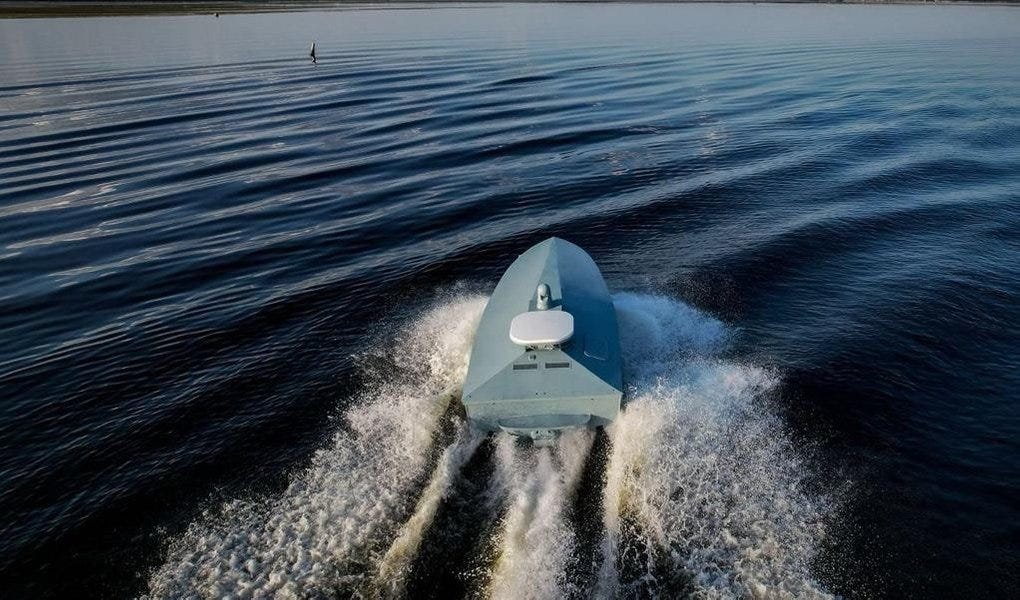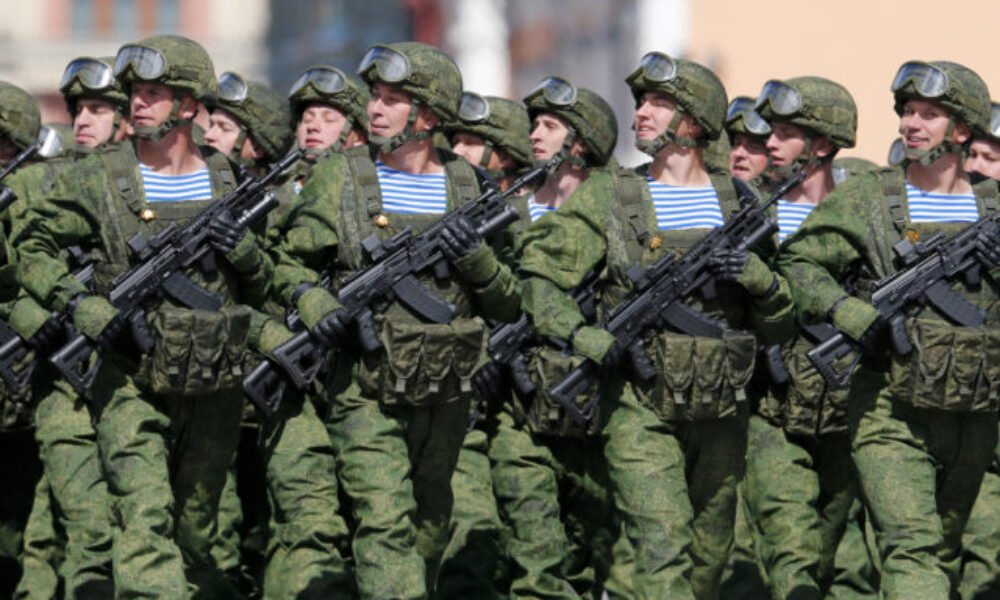
When Russia launched its full-scale invasion in February 2022, Ukraine barely had a navy. Over the past three years, Ukraine has disabled a third of Russia’s Black Sea Fleet and forced the rest to retreat hundreds of miles to safer harbors.
Instead of relying on traditional, costly naval capabilities that require years to develop, Ukraine focused on building an unmanned fleet, which is now ready for export to countries in need of such systems.
When I met with Rui Costa, a former Portuguese Navy officer, board member of the Royal Netherlands Society of Marine Engineers, and host & co-founder of UNMANNED_X, I intended to focus on Ukraine’s naval drone exports. However, our conversation soon shifted toward the growing threats posed by Russia. In the end, we reached a shared conclusion: NATO countries must prepare not only for aerial threats but also for those emerging from the sea.
This article is based almost entirely on my interview with Mr. Costa (featured in block quotes), with only occasional additions of updated data and figures here and there.
Thank you for reading and supporting my work!
Ukraine has developed several types of naval drones, including the most famous unmanned surface vehicles (USVs) — such as Magura and SeaBaby — and unmanned underwater vehicles (UUVs) like Toloka.
In addition to that, there are a few less public innovations, such as Mamai, developed in 2023, and called the fastest vessel in the Black Sea, capable of reaching speeds of up to 110 km/h. Also, at the DEFEA 2025 defense exhibition, company Nordex unveiled its Seawolf – a modular USV platform. Additionally, there is another impressive innovation – the naval drone Katran built for multi-domain warfare. These USVs are modular “motherships” capable of engaging targets in the air, on the surface, and deep behind enemy lines. Katran can accommodate a wide range of armaments — from missile systems to swarms of FPV drones. The platform also uses artificial intelligence for precision targeting.
“Ukraine’s geopolitical context is truly unique; the naval systems in Ukraine were born out of evolutionary pressures — they emerged from the realities of war, not from theory,” says Rui Costa.
Ukrainian developers built what worked in their environment. We often read about Taiwan shifting toward a ‘porcupine strategy’ — Ukraine is already living it. The idea is to field systems that leverage the economics of war in your favour — low-cost, adaptable platforms that can deliver outsized effects.
For instance, the cost of Magura is around $270,000 per complex. In December 2024, Magura drones disabled two Russian Mi-8 helicopters and heavily damaged another — the first case in history where a naval drone successfully attacked airborne targets. The operation involved the use of R-73 air-to-air missiles (labeled Sea Dragon). One Russian Mi-8 helicopter is reported to cost up to $16 million.
On May 2, 2025, a Magura naval drone operated by HUR for the first time shot down a Russian Su-30 multirole fighter jet. The aircraft was destroyed by an AIM-9 Sidewinder air-to-air missile launched from the drone (costing $200,000 to $600,000 per unit). Su-30, estimated to be worth around $50 million, burst into flames in the air and fell into the sea.
We can easily imagine that more countries with limited budgets would be interested in acquiring such capabilities to shift the economics of war in their favor.
When I asked which countries might be most interested, Rui explained that while these systems thrive in Ukraine’s unique context, you can’t simply copy and paste them elsewhere.
In North America, these systems may not directly translate due to different political and geographic realities. The U.S. is primarily concerned with a possible Chinese invasion of Taiwan. This particular operational scenario will demand maritime drones designed for reliability, long range, and extended endurance for blue water operations.
That said, elements of Ukraine’s approach – low-cost, adaptable platforms for ISR and coastal or littoral operations – could still provide value in specific scenarios, such as monitoring and providing effective deterrence within chokepoints, ports, or island chains.
There are other regions where Ukraine’s technologies are likely to gain even more traction. “I’d first look at Asia — states with small navies and limited defence budgets where inexpensive, smart naval systems can become credible deterrence tools as part of a ‘porcupine’ strategy. Think of the Philippines, Taiwan, even Singapore — Singapore is already ahead of the curve, but for others, these kinds of systems would improve their ability to deter or complicate aggression and to monitor and protect maritime approaches,” Rui said.
It seems that something has already been underway in the region. For several months, reports have suggested that the Philippines and Ukraine plan to sign an agreement on defense technology cooperation, potentially including drone production. According to Chester Cabalza, founder and president of the Manila-based think tank International Development and Security Cooperation, drone co-production with Ukraine could focus on creating systems tailored for Southeast Asia’s climate, incorporating heat-resistant batteries, corrosion-resistant casings, and humidity-tolerant sensors.
In Europe, however, Ukraine’s approach is far more directly applicable — particularly systems that are designed for maritime ISR in the region’s own unique environmental and contested operational context; expendable assets used to create a sustained asymmetric threat towards expensive conventional naval platforms or infrastructure; or even to counter other USVs.
Countries like Portugal are obvious candidates: they have one of the world’s largest maritime responsibility areas but relatively small defence budgets, so low-cost USVs and autonomous sensors make a lot of sense for monitoring their vast EEZ and protecting offshore infrastructure. However, to be effective in this context, such systems would still need improvements in reliability, autonomy, and endurance compared with Ukraine’s designs.
In September 2025, Ukraine took part in the Portugal-led military exercise, REPMUS 2025, dedicated to testing hundreds of autonomous systems for naval applications. For the first time in NATO’s history, Ukraine’s Navy led and coordinated the Opposing Force (OPFOR). The training highlighted modern maritime warfare trends, particularly the use of unmanned systems for coordinated strikes and rapid threat response.
Based on its vast experience, Ukraine can offer not only unmanned naval capabilities but also practical expertise in countering Russian naval drones.
“Ironically, the same systems that work so well for Ukraine also work for Russia,” warned Costa. “There are still very few effective countermeasures against similar platforms, and that’s something we worry about,” he added.
The Russian Navy began forming specialized regiments to integrate unmanned boats and underwater vehicles across its fleets in May 2025. In August 2025, for the first time, a Russian naval drone struck a Ukrainian reconnaissance vessel while it was moored near the mouth of the Danube River. Two Ukrainian crew members were killed.
Allegedly, Russia already has seven types of naval drones, each designed for different operational roles. Russia has drawn on Ukrainian drone expertise to develop its own capabilities to regain its position in the Black Sea.
On naval drones, Russia is still behind Ukraine, believes Costa. The designs coming out of Russia are generally more “primitive” than what Ukraine is developing. Russians are tending to often attempt to reproduce what Ukrainians have been developing before the start of the invasion – albeit much less competently.
In Europe, Navies often push forward toward integrated, complex architectures where USVs operate as part of a wider manned–unmanned “system of systems”. By contrast, much of what we see from Russia has been stand-alone systems that aren’t integrated into broader networks. Their approach looks more like a series of independent experiments than a coherent force-multiplying architecture.
In September 2025, Russia’s Black Sea Fleet began testing new jamming-resistant naval drones guided by fiber-optic cables. Russian authorities said that these systems can be used for one-way attacks, as an aircraft carrier for aerial drones, and to fight Ukraine’s own naval drones. By using an optical cable, the Russians are trying to compensate for their lack of sufficient and powerful satellite communication antennas.
While the Russian “Katran” (whose concept and name they stole from the Ukrainian Katran) that uses a radio channel for control, could be countered with electronic warfare systems, that will no longer be the case for the system with a fiber-optic cable.
Rui Costa is skeptical about the use of fiber-optic technologies in the maritime domain. He commented that fiber-optic-guided USVs reduce the risk of jamming, but that comes at a cost: range and flexibility. Tethered systems are typically limited to tens of kilometres between the control station and the drone. Unlike small FPV drones, USVs can’t be easily or covertly transported, and generally require vehicles to do so: placing operators at very high risk when deploying these solutions.
While this technology is still raw, experts warn that Russians might use these fiber-optic naval drones to transport several FPVs for striking Ukraine’s Mykolaiv, Odesa, or Kherson regions from the shores of the temporarily occupied Kherson region.
Russians’ ultimate goal with their unmanned naval systems appears to be creating asymmetric, disruptive threats — tools capable of menacing critical offshore infrastructure, ports and isolated ships in transit — rather than systems intended to augment a conventional navy.
That is especially worrying, because these platforms are perfectly suited to disrupt energy and maritime logistics, which are vital for Europe.
Thus, underestimating Russia’s naval unmanned capabilities would be highly unwise and undervalues these systems’ operational logic.
“Although their autonomous naval systems seem to appear relatively basic, they embody a central principle of Russian military strategy: rapidly developing simple, low-cost, and easily mass-produced assets designed to exploit key weaknesses in enemy defenses,” says Costa.
According to Costa, Europe is generally regarded as holding naval superiority over Russia. Yet Russia has proven to be a flexible and adaptive adversary, continuously learning from its wartime experience and refining its capabilities in response.
This capacity for adaptation is a strategic capability in itself. The Russian military has continuously shown an ability to absorb battlefield lessons, reconfigure tactics and technology, and develop simple yet relatively effective solutions that both cover its own capability gaps as well as exploit its adversaries’.
If a war ever spilled over into direct confrontation with NATO, one clear aim would be to threaten critical infrastructure — to use naval drones and USVs to damage energy networks and disrupt shipping. Those are the kinds of targets that impose outsized economic and political costs: offshore gas and oil platforms, port terminals, LNG facilities, ferry and cargo lanes, and the choke-points that commercial traffic depends on.
So the obvious question is: what’s the tastiest target? Anything that’s hard to defend, hugely consequential if taken offline, and difficult to reroute quickly — large energy hubs, major ports, and critical maritime logistics nodes fit that description. Damage there paralyzes whole supply chains and creates leverage far beyond the cost of the attack.
The heart of Europe’s economy sits at sea: gas, oil, and maritime logistics are critical nodes that make tempting, high-impact targets. Offshore energy companies are commercial actors, not militaries, so their infrastructure is inherently vulnerable and difficult to defend.
Protecting this infrastructure can’t be left to chance — it requires coordinated state action, novel technological solutions, and deep organizational and doctrinal reform. There are efforts underway to address these threats, but current capabilities are still critically insufficient; in wartime tempo, defending Europe’s sea-based lifelines will be extremely challenging.
Ultimately, if Europe fails to prepare to meet its adversary, it may discover that victory at sea is lost long before the first shot is fired.
Seen in that light, it’s logical for Moscow to focus on systems that either create those asymmetric threats or that counter the very USVs Ukraine fields.
Even if Russia’s programmes today look experimental or stand-alone, the incentives to develop both offensive and defensive tools against Ukrainian unmanned surface systems are clear: protect your own maritime approaches, deny the adversary freedom of action, and retain the ability to threaten high-value civilian and military maritime infrastructure if escalation occurs.
Some European countries are beginning to grasp the seriousness of this challenge. According to reports from early October 2025, naval drones were integrated for the first time into the Wildfire exercises conducted by the French Navy in the Atlantic. The drills involved two multi-purpose frigates, a coastal patrol vessel, and an NH-90 helicopter.
During the exercise, these ships faced a massive simulated attack by unmanned systems deployed by the French Defence Procurement Agency (DGA). Working together with the private operator SeaOwl, which supplied surface drones capable of operating in swarms, the DGA launched 80 targets in total, with underwater drones also taking part in the drills.
Yes — naval drones can be jammed.
For instance, there have been cases when Ukraine lost control of its naval drones. Recently, a Magura drone was washed ashore in Türkiye, about 900 miles from Ukraine.
Electronic-warfare systems aboard ships, shore-based EW sites can disrupt their links. Developers try to mitigate that by pushing autonomy into guidance systems, but higher autonomy creates another problem: in the maritime domain, it becomes much harder to confirm a target was actually struck, and commanders need positive battle-damage assessment.
Ukraine has developed an interesting combination — using an unmanned surface vessel (USV) as a “mothership” drone capable of carrying several unjammable fiber-optic drones in retractable compartments built into its hull. This innovation was employed during attacks on the Tuapse and Novorossiysk ports in Russia, marking the first time fiber-optic drones were launched from the sea.
Undoubtedly, we will see this tactic adopted by Russia as well.
Recently, it became known that Russia is using its illicit “shadow fleet” of oil tankers for intelligence gathering and sabotage operations, including launching drones. Ukrainian experts share this assessment, linking the appearance of “unidentified drones” over various European cities to Russian ships.
“Sabotage operations are often conducted not by conventional military assets, but rather by the Shadow fleet – fundamentally altering the strategic balance at sea,” says Costa.
The maritime domain is vast, expensive to monitor, and inherently complex. Unlike on land, continuous surveillance is impossible, which makes it an appealing environment for actors seeking to conceal movement and strike under the cover of plausible deniability.
While the rules of war remain an important framework, recent Russian behavior demonstrates a willingness to disregard them.
The question that follows is whether Europe is prepared to confront a contested maritime battlespace under these conditions.
As we can see, it is not only Ukraine that is emerging from this war as adaptable and technologically capable — unfortunately, the same applies to Russia. While Europe is still undecided about how to deal with the growing number of drones in the air, it should already be preparing for future attacks coming from the sea.
If you’re new to my digest, here’s a quick disclosure: neither this nor any of my publications is sponsored. This digest is supported entirely by private individuals — readers and subscribers like you.
Recently, my newsletter became a bestseller, reaching over 100 paid subscribers. That’s a huge milestone for me!
Thank you to everyone who has chosen to show their support and appreciation!
Also, I’m continuing my fundraising campaign to buy fiber-optic equipment for my university friend serving in the Armed Forces of Ukraine. If you can, please help: PayPal.
My previous reports on naval drones:










